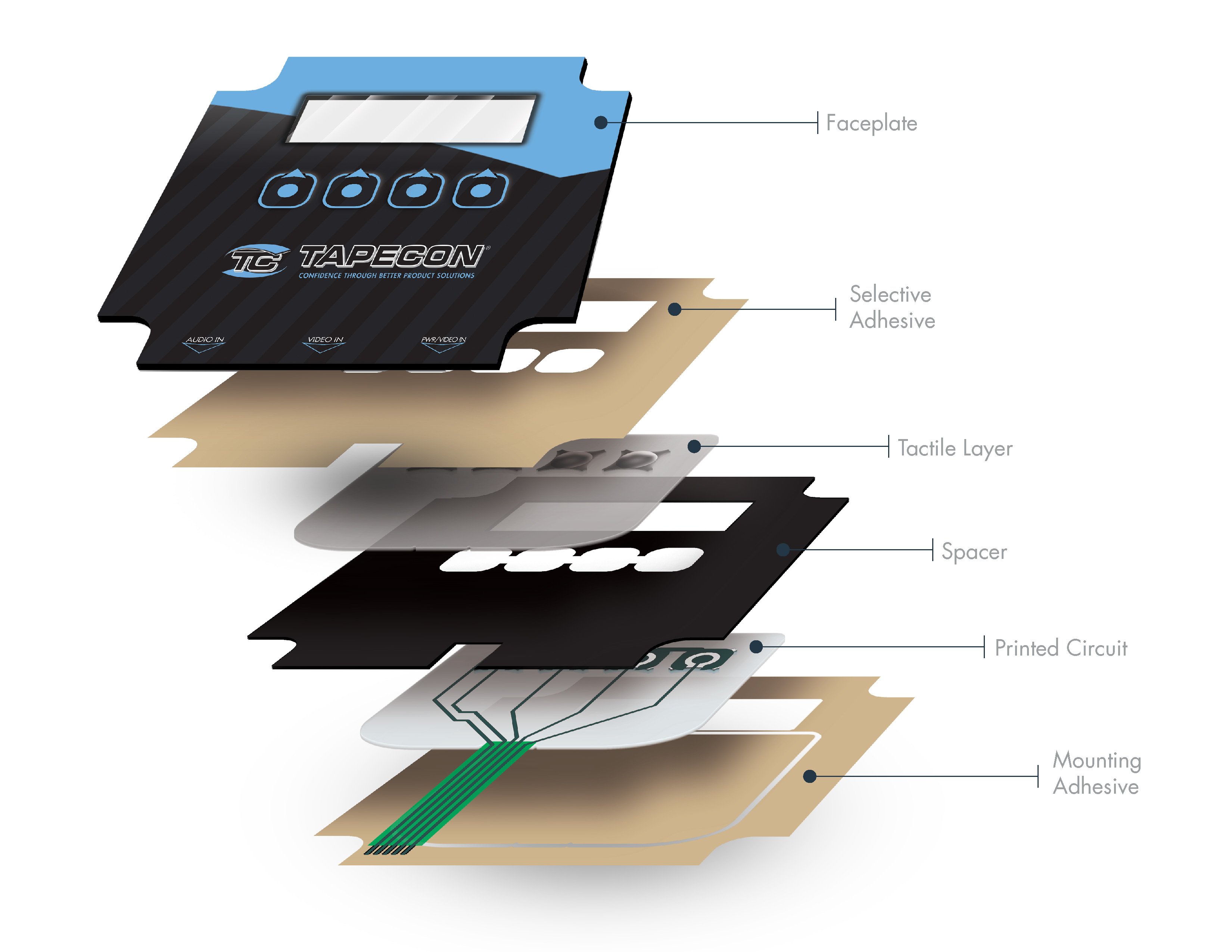Why Selecting the Right Membrane Switch Is Crucial for Your Item Layout
Why Selecting the Right Membrane Switch Is Crucial for Your Item Layout
Blog Article
Comprehending the Performance of Membrane Switches Over for Interface Tools
The functionality of membrane switches over stands for a substantial innovation in interface design, combining performance with visual flexibility. These switches operate via a multi-layered structure that translates user communications into electric signals, enabling both small formats and durability versus environmental factors. As sectors increasingly focus on individual experience, understanding the subtleties of membrane switch modern technology ends up being essential. What implications do these advancements hold for future applications, and exactly how might they redefine customer interactions throughout various gadgets?
What Are Membrane Buttons?
Membrane switches are innovative interface gadgets that facilitate customer interaction with digital equipment. These flexible parts consist of numerous layers, consisting of a graphic overlay, spacer, and a published circuit layer. The design allows for a seamless assimilation right into various digital devices, boosting both the aesthetic and practical elements of user interfaces.
Membrane layer switches are generally used in a wide variety of applications, from household appliances to commercial equipment and medical tools. Their building usually features a slim account, making them an ideal choice for compact designs. The tactile comments supplied by these buttons can be engineered to satisfy certain customer choices, making sure efficient communication in between the individual and the gadget.
Resilience is one more considerable advantage of membrane layer switches, as they are resistant to dust, dampness, and chemicals, which improves their life-span popular environments. Furthermore, these switches can be personalized in terms of shape, size, and graphic design, enabling branding and user-specific features. In general, membrane layer switches over represent a useful remedy for boosting customer experience in digital devices, combining performance with visual charm in an efficient fashion.
How Membrane Changes Work
Operating on a simple concept, membrane layer switches over utilize a layered building and construction to register customer input efficiently. Each switch contains several layers, consisting of a printed circuit layer, a spacer layer, and a leading graphic layer, which are developed to work together perfectly. When a customer presses the top layer, it compresses the spacer layer, bringing the conductive components of the circuit layer right into call with each other.
This get in touch with creates a shut circuit, indicating the tool to perform a particular feature. The style enables different configurations, including tactile responses, which can improve the user experience by offering a physical sensation upon activation. The materials utilized in membrane buttons usually include adaptable substrates, such as polyester or polycarbonate, which guarantee longevity and resilience versus deterioration.

Trick Benefits of Membrane Layer Buttons

An additional significant advantage is their compactness. Membrane switches are thin and lightweight, which allows makers to conserve room in their devices without compromising functionality. This function is particularly helpful in applications where weight and quantity are vital factors to consider.
In addition, membrane buttons are immune to dust, dampness, and chemicals, enhancing their sturdiness. This durability extends their lifespan and minimizes the need for constant substitutes, resulting in price financial savings with time.
Additionally, the tactile responses given by look at these guys membrane layer switches can be optimized to enhance individual communication. They can include features such as raised switches or distinct clicks, enhancing functionality and individual experience.
Applications Across Industries
Interface devices utilizing membrane layer switches prevail in a broad selection of sectors, showcasing their versatility and capability. Membrane Switch. In the clinical industry, membrane layer buttons are indispensable to gadgets such as diagnostic devices and patient surveillance systems, where their toughness and convenience of cleaning are vital for maintaining health standards. In the automobile industry, these buttons are employed in control panel controls and infotainment systems, offering a smooth and modern-day user interface for customers.
Moreover, the customer electronic devices industry gain from membrane buttons in devices and portable devices, where compact design and user-friendly interfaces boost user experience. Industrial applications also leverage membrane switches for control board in equipment and automation systems, emphasizing their effectiveness and resistance to rough atmospheres.
In the aerospace and protection markets, membrane layer buttons are made use of in cabin controls and tools, where reliability and performance under extreme problems are paramount. Furthermore, the pc gaming industry increasingly integrates membrane switches in controllers and game equipments, adding to an engaging user experience. Generally, the convenience of membrane layer switches over enables their prevalent use throughout numerous sectors, emphasizing their value in modern interface design.
Future Trends in Membrane Layer Change Innovation

Additionally, making use of innovative products, such as polycarbonate and polyester films, is expected to increase, providing enhanced longevity and resistance to ecological stress factors. These materials add to the general long life of membrane layer buttons, making them ideal for harsher industrial applications.
Moreover, the consolidation of clever technology, consisting of IoT connection, will certainly make it possible for membrane layer switches to connect with other tools and systems, assisting in a much more interactive individual experience. This trend straightens with the expanding need for wise tools Get the facts throughout different sectors, from medical care to customer electronics.
Finally, personalization alternatives are prepared for to broaden, permitting manufacturers to create bespoke options customized to certain customer needs and choices. These developments will place membrane switches as vital parts in the evolution of More Help individual interface modern technology.
Verdict
In final thought, membrane switches over stand for a pivotal innovation in user interface innovation, offering a reliable and versatile service for varied digital applications. As advancements in material scientific research and touch sensing innovations proceed, the capability and applicability of membrane switches are expected to expand, strengthening their significance in modern-day digital devices.
Report this page